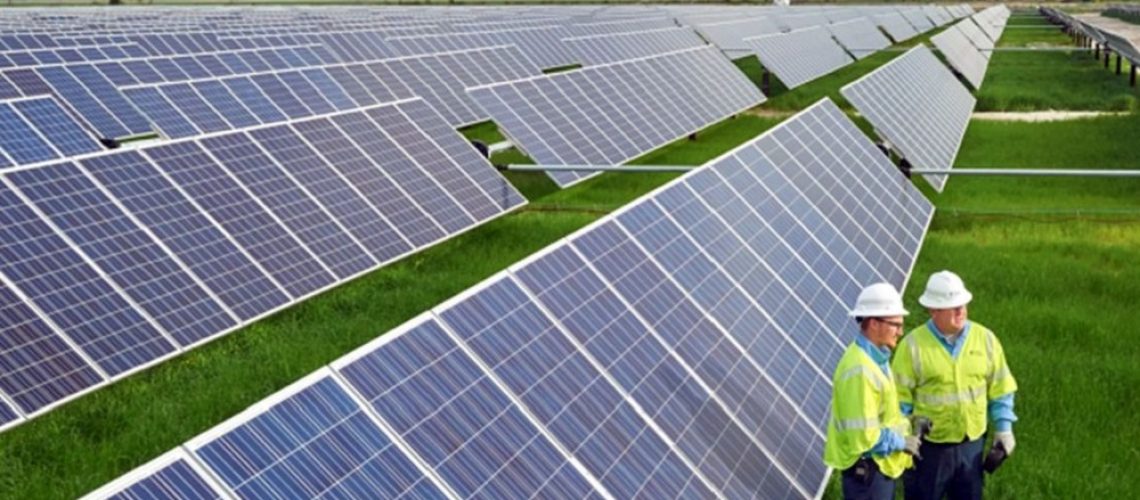Duke’s five-year capital plan of $65 billion is focused on energy transition investments, which it says is a considerable increase over previous budgets, while its current budget removes almost $3 billion of capital it would have invested into the utility solar and distributed generation business.
Duke Energy reported a $531 million loss in Q4 2022 as it wrote down the value of its commercial renewable energy business currently on the auction block. The utility also announced plans to cut $300 million in expenses in 2023, partly through layoffs out of its Charlotte, N.C. headquarters.
During its Q4 2022 earnings call, chief financial officer Brian Savoy did not say how many jobs are being cut, but said the measure includes a “modest” number of staff as well as external contractors and consultants.
The investor-owned utility reported FY22 earnings per share of $3.33, considerably lower than reported EPS of $4.94 in FY21. Its reported earnings per share (EPS) is down based on the impairment on the sale of the commercial renewable energy business.
“Our path forward is clear and underpinned by the strength of our regulated businesses, a disciplined approach to cost management and a robust (five-year) $65 billion capital plan,” said Lynn Good, chief executive office of Duke. “We’re well positioned to earn solidly within our 5% to 7% growth rate through 2027.”
In November 2022, Duke Energy launched an auction for its commercial renewable energy platform, which is expected to close in the second half of 2023. Good said the utility is “on track to exit both the utility scale and the distributed energy businesses” this year.
Duke’s five-year capital plan of $65 billion is focused on energy transition investments, which Savoy said was considerable increase over previous multi-year budgets, while its current budget removes almost $3 billion of capital it would have invested in the utility solar and distributed generation business. In other words, the utility is increasing its regulated business spending by $5 billion, for which Duke says will result in a 7.1% earnings-based CAGR growth rate through 2027.
Savoy defended the company’s book value of the commercial renewables portfolio platform at $3 billion, despite the utility writing down a $1.3 billion impairment charge since the sale process launched in Q3 2022. This led analysts to deduce the renewables platform will see proceeds of less than $1.7 billion.
Duke’s Q4 2022 results was marred by severe weather from winter storms hitting the southeast region, which forced its primary utility business Duke Energy Carolinas to issue a curtailment and power conservation notice during the Christmas week. Earlier in the month, up to 45,000 residents were in the dark in Moore County, N.C., due to a reported shooting incident at two sub-stations that were under investigation by the FBI, regional and local law enforcement.
Duke Energy initiated a sale process for its commercial renewables business, which includes a 3.5 GW wind and solar portfolio, in September 2022. In November the company said the value for the renewables business could exceed a book value of $4 billion. Media outlets including Infralogic reported the utility is being advised by Morgan Stanley and Wells Fargo Securities for the review of its renewables platform.
Duke’s common shares traded at $97.55 per share today, up 4.65% from $93.22 per share on Nov. 2, when it reported Q3 2022 earnings. The utility has a $75.1 billion market capitalization and provides electric services to 8.2 million customers in six states, and gas services to 1.6 million customers in five states.
The utility has a 2030 goal of achieving net zero natural gas fleet emissions and a 50% reduction in gas emissions from its electric business, with full net zero emissions by 2050. The company continues to invest in grid enhancements including energy storage, hydrogen and advanced nuclear technologies.
Last week, the utility completed construction on a 2 MW solar and 4.4 MWh storage project in Hot Springs, N.C., an Appalachian town with population of just 500. The microgrid uses lithium batteries from Wärtsilä Energy and provides grid reliability services to the electric grid, such as frequency and voltage regulation and ramping support and capacity during system peak power usage.
“Duke Energy has numerous smaller microgrids on our system, but this is our first microgrid that can power an entire small town if its main power line experiences an outage,” said Jason Handley, general manager of Duke Energy’s Distributed Energy Group.



